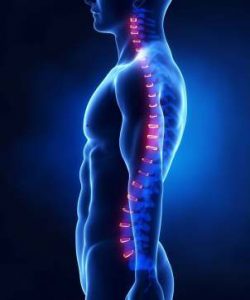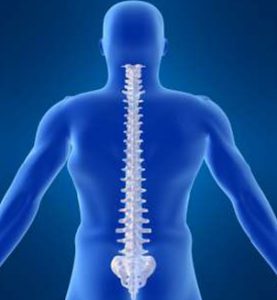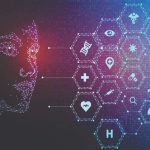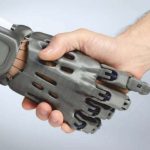Being told that you have a spinal disorder is often a worrying and stressful experience. However, one of the best ways to reduce your fears and concerns is to gain a better understanding of your condition.
Dr. Firas M Husban, Consultant Orthopedic Surgeon, specializing in spine surgery at Burjeel Hospital for Advanced Surgery Dubai talks about the most common spine conditions and provides an informative explanation of the condition, their symptoms, and possible treatment options.
 The Spine is one of miracles of the almighty creator, where the secrets of physics, chemistry and biology meet, is the main axis of the body and constitutes a link connecting the upper and lower limbs and the head together, characterized by stability, a complex dynamic system, distributes the body weight accurately and supports the movement of upper and lower limbs in all directions, and at the same time protects the spinal cord and nerves where the nervous and electrical current are responsible for delivering messages to the rest of the body and then interpreting it.
The Spine is one of miracles of the almighty creator, where the secrets of physics, chemistry and biology meet, is the main axis of the body and constitutes a link connecting the upper and lower limbs and the head together, characterized by stability, a complex dynamic system, distributes the body weight accurately and supports the movement of upper and lower limbs in all directions, and at the same time protects the spinal cord and nerves where the nervous and electrical current are responsible for delivering messages to the rest of the body and then interpreting it.
What is a spine:
Spine is super architectural structure; with It is a 33-storey tower (the vertebrae), separated by a shock shield (cartilage). The splendor of its architecture is in his appearance straight if we look at it on its front side, while you are watching it. The curves are the same if we look at it from the side. Wherever the tower moves, forward or backward, sideways or in the form of a wrap, it loses nothing of its coherence and firmness.
Such an engineering structure, any disorder in its composition, bending and straightening, and its working mechanisms, will result chronic pain and diseases that the patient will not be able to live in a proper manner.
Types of spine related disorders:
Abnormal Bends are hazards (diseases) that affect this building engineering in children in particular, and in terms of causes there are three types:
- Acquired
- Congenital.
- Resulting from other diseases.
- Acquired curvature: There are bend in the spine, toone side, over 10 degrees, and are called “Scoliosis” which is an unknown cause.
- Congenital curvature: It is caused by the non-growthof a part of a vertebrae and appears at an early age (postnatal or during the first 2 years of age).
- Bends resulting from other diseases: This includesbrain and muscles diseases, inflammation and tumors of the spine, and also produces accidents and fractures.
Early diagnosis is the key:
The diagnosis of spinal deformities is easy, given the appearance of the signs on the body, which can easily be observed by the parents, including the minors in the trunk of the body compared to the lower limbs, the slope of one of the shoulders, the pelvic tilt, or short limb legs, B) cupping.
 It is possible to detect the defects of the spine through a simple and easy examination conducted by the parent: Stand away from your child with couple of meter distance; requesting your child to bend forward (position kneeling), if you observe any abnormal curvature in the back you need to contact the specialist doctor.
It is possible to detect the defects of the spine through a simple and easy examination conducted by the parent: Stand away from your child with couple of meter distance; requesting your child to bend forward (position kneeling), if you observe any abnormal curvature in the back you need to contact the specialist doctor.
Early diagnosis by parents is one of the most important methods of treatment, which is to spread awareness among parents and educate children to this type of disease, by doing so; a lot of cases can be cured in early stages; before getting complicated where the treatment will be more difficult and take longer time.
The advanced stages of spine curvature, over 80 degrees, result in very serious complications, which may lead to heart and lung failure, causing death – God forbid
- in some cases as a result of distortion of the rib cage. The movement of the trunk and extremities, reflected on the general strength and appearance of the body, which makes the patient unable to produce, which causes many cases of mental illness.
The curvature of the spine is treated according to the quality of the curve. Bends that range from 10 to 20 degrees only need exercise and exercise to strengthen the muscles, while those between 20 and 40 degrees, they need to use Corsets, while surgery is a major way to treat curvature of more than 40 degrees.
Surgical treatment:
 The surgical treatment aims to reorganize and merge the curved vertebrae together, and to straighten them back and tighten them, to ensure that the curve does not develop and increase, maintain body balance, and remove deformation for cosmetic purposes.
The surgical treatment aims to reorganize and merge the curved vertebrae together, and to straighten them back and tighten them, to ensure that the curve does not develop and increase, maintain body balance, and remove deformation for cosmetic purposes.
The scientific and technical progress witnessed by this field is enormous today, which allows for limited surgical interventions, using a nerve detector during the process itself, which increases the success rate of the surgical procedure to about 95 percent and reduces the probability of complications to 0.3 percent, which ensures the absence of complications or neurological repercussions, Such as paralysis, up to 99.7 percent.
The surgical interventions are advanced operation which required small cuts; with little bleeding, as opposed to traditional operations. The patient is quickly recovered, stay in the hospital for no more than three days and can walk the next day, which makes him return to his life and natural life in a very short
Top facts about Spine which all of us should know
 The spine has a ton of working parts. The average spine has approximately 220 ligaments, 100 joints, 120 muscles and 33 individual vertebra. However, over time some of these vertebrae actually fuse together. This is how the sacrum and the coccyx are formed.
The spine has a ton of working parts. The average spine has approximately 220 ligaments, 100 joints, 120 muscles and 33 individual vertebra. However, over time some of these vertebrae actually fuse together. This is how the sacrum and the coccyx are formed.
Early diagnosis by parents is one of the most important methods of treatment, which is to spread awareness among parents and educate children to this type of disease, by doing so; a lot of cases can be cured in early stages; before getting complicated where the treatment will be more difficult and take longer time.
As humans we have seven cervical vertebrae in our necks, the same number as giraffes!
Approximately 8 out of 10 Americans will suffer from back pain during their lives. The most common cause of back pain among Americans? Trauma caused by automobile accidents.
Cartilage makes up 25% of the spine’s overall length. Your spinal cartilage is actually a very impressive type of tissue. Did you know that the pressure from microgravity put on the body when in space can cause spinal cartilage to expand? Astronauts who go to space can actually grow by as much as 3% when they return.
Gravity can have a major impact on the spine. In fact, humans actually tend to shrink as they age. After the age of 40, the average person shrinks as much as 1/3 of an inch every ten years.
Sitting hunched over at your desk can put major pressure on your spine. Sitting in this position puts around 200 pounds of pressure on your lumbar spine, or your lower back. This is why so many Americans, especially those with office jobs have low back pain.
The spine is very strong. In fact it can handle hundreds of kilograms of pressure. This is a good thing too, because something as simple as lying flat on your back with your knees elevated can put up to 25 pounds of pressure on your spine.
Your spine protects your spinal cord, which delivers messages throughout your body. The average spinal cord weighs around 35 grams.
The spine is very flexible. So flexible that if you bent it as far is it can go it would form two-thirds of a complete circle.
The first vertebrae in your neck is called the atlas. This is perhaps the most important vertebrae in the entire spine. It is responsible for carrying the weight of the head and was named after the character in Greek mythology who was forced to carry the weight of the world on his shoulders for all eternity.
The global burden of spinal disorders
- Low back pain is the single leading cause of disability worldwide, according to the Global Burden of Disease 2010.
- Back pain is one of the most common reasons for missed work. In fact, back pain is the second most common reason for visits to the doctor’s office, outnumbered only by upper-respiratory infections.
- One-half of all working Americans admit to having back pain symptoms each year.
- Experts estimate that as much as 80% of the population will experience a back problem at some time in their lives.
- Most cases of back pain are mechanical or non-organic—meaning they are not caused by serious conditions, such as inflammatory arthritis, infection, fracture or cancer.











